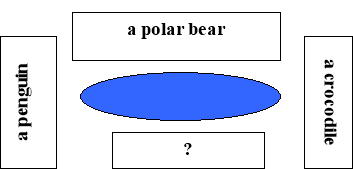Урок-гра з елементами драматизації "At the Zoo"
AT THE ZOO
Objectives:
to extend students’ knowledge about British way of life;
to improve oral speech skills based on different prompts;
to develop students’ listening skills;
to develop students’ lexical and grammatical skills;
to develop students’ phonetic skills .
Equipment : pictures, cards, a tape recorder and the cassette, copies of texts, zoo-domino, bricks with letters, a ball.
Procedure:
I. Warm up:
T: Dear class, yesterday I watched a very interesting TV program “Animal Planet”. They gave many exciting facts about different animals. Let’s see if you know all of them. I’ll throw you a ball and name the animal in Ukrainian. You must translate the name into English and throw the ball back.
II. Phonetic drill:
T: Today at the lesson we shall speak about animals in English. But we must do it correctly. Let’s practise some tongue-twisters:
[ aı ] I like wild lions and tigers.
[dʒ ] Julie the giraffe is very gentle.
[ks ] A big fox sits in the box.
[w] A wolf and a squirrel live well in the wood.
[æ] A fat cat has a fat rat.
[ ı ] A little kitten sits in the kitchen.
[i: ] The eagles eat fresh meat.
[ ∧ ] One monkey runs and jumps.
III. Listening comprehension:
T: You know that there are many dogs in our yard. Some days ago I heard a very interesting announcement on the radio. Listen to it and find this dog in our yard.
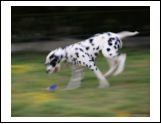

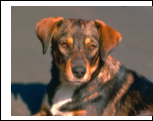
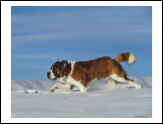
![]()
![]()
![]()
![]()

IV. Grammar drill:
T: What shall you do next weekend? Look at the table and make up sentences. The task of the group is to say that they did all these things yesterday.
![]() read a book
read a book
watch TV
go to the cinema
![]() Let’s visit our friends
Let’s visit our friends
play chess
go to the forest
listen to music
T: I have a good idea. I think Spot is missing its zoo. Let’s take it back to its friends.
V. Phonetic reading:
T: Let’s read a short poem and see if you know what animals live at the zoo.
We go to the zoo
Today it is the rest day
We go to the zoo
On Sunday, on Sunday
We go to the zoo.
There is a zebu there,
And a zebra too,
A bear and a monkey,
And a kangaroo.
Example: P1: A lion lives at the zoo.
Class: Yes, you are right!
P2: A cow lives at the zoo.
Class: No, you are wrong!
VI. Dramatizing:
( There is a plan of the zoo on the blackboard. The pupils representing animals may use fancy dresses. All of them have pictures of the animals they are speaking about and stick them to the plan at the appropriate place.)
![]()
|
a tiger |
an elephant |
a monkey |
a brown bear |
|
a giraffe |
|
a squirrel |
|
|
a kangaroo |
a hare |
||
|
a zebra |
a camel |
||
|
a lion |
a fox |
||
T: Now we are at the zoo. This is the director of it. Tell us, please, what animals live here.
Director: Our zoo is very big. Many animals live here. They came here from many countries and continents. You can see here a lion and a deer, a wolf and a hare, a fox and a squirrel and many others. Thank you very much for our dog. We are glad to see you at our zoo. Let’s go to see animals. Here lives a lion. His name is Harold. He came from Africa.
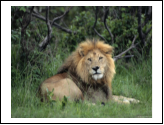
Pupil1: Harold the Lion lives at the zoo.
Everyone knows him, don’t you?
He’s got heavy paws and a great mane of hair,
And his roar gives people a terrible scare!
A lion like that must have plenty to eat,
So Harold is given the best kind of meat.
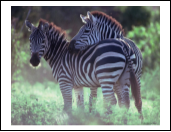 Director: Here live two zebras.
Director: Here live two zebras.
Pupil2: All the zebras are, of course,
Second cousins of a horse.
They are striped from head to toe,
In the grass they do not show,
So they run about and play
Hide-and-seek the livelong day.

Director: And now you can see a polar bear.
Pupil3: How nice to dive and play
In such a lovely pool!
They change the water every day,
And keep it nice and cool.
Director: In the next cage you can see kangaroos. They came from Australia. They are very nice.
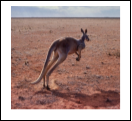
Pupil4: Aren’t they having fun these two,
Playing leapfrog in the zoo!
If you were a kangaroo
You could join them too.
Director: That strange animal at the pond is a penguin. He came from Antarctic
Continent. He is a funny bird, because he can swim but he can’t fly.

Pupil5: Don’t I look just like a sack,
One part white, the other black?
In the old days you should see me
Race and beat the fastest streamers!
Now I’ve gotten very fond
Of this quiet little pond.
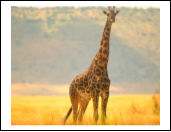 Director: Julie the giraffe is very gentle. She’s very tall. Her neck is so long. She can eat the leaves from the top of the trees.
Director: Julie the giraffe is very gentle. She’s very tall. Her neck is so long. She can eat the leaves from the top of the trees.
Pupil6: For a child who’s small and short
Picking flowers is just sport.
With a neck as long as ours
It takes hours, simply hours.
Director: This tiger is from Africa. He is only 18 months old. But he is very strong.
 Pupil7: I’m a tiger, not a cat.
Pupil7: I’m a tiger, not a cat.
I am dangerous to pet.
Beasts of prey are fond of meat,
And I am always glad to eat.
Director: Our elephant is strong a merry. His name is Jumbo. He is from India.
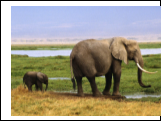
Pupil8: This tiny little tot
Feels very, very hot.
There’s nothing like a spray
To give the heat away.
This tub is not much fun
For tot who weighs a ton.
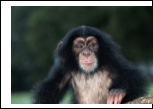 Director: These are our pets. They are monkeys. Their names are Mickey and Mago. They like to run and jump and do different exercises.
Director: These are our pets. They are monkeys. Their names are Mickey and Mago. They like to run and jump and do different exercises.
Pupil9: I’m new at the zoo, and my name is Mago.
I came here from Africa some weeks ago.
I’m homesick at times, but happy enough
Eating bananas and this lovely stuff.
Director: I’m sorry, children. The animals have their mealtime. You can wait an hour and then see some other animals.
VII. Playtime:
T: Here we have some photos of animals who also live in the zoo. But somebody‘s written wrong words under them. Let’s match the pictures and the names. Let’s play zoo-domino.
VIII. Solving riddles:
T: And now, if you want to know what other animals live at the zoo, let’s solve some riddles:
1. I have long ears and a short tail. The beasts like to eat me. I am afraid of them. What am I?
(a hare)
2. I am big and brown. I like berries and honey. Children are afraid of me. I like to climb the trees. What am I? (a bear)
3. I am a big animal with humps on my back. I live in Africa and Asia. I am often called a ship of desert. What am I? (a camel)
4. I am green and I can swim. I have very sharp teeth. I live in Africa and America. What am I?
(a crocodile)
5. I am red. I live in the forest. I like to eat hares and hens. I am very cunning. What am I?
(a fox)
6. I am little and red. I live in the forest. My house is in the tree. I like to eat nuts and mushrooms. What am I? (a squirrel)
IX. Guessing game:
T: This cage is empty. The animal hid. Let’s ask the Director of the zoo some questions to find out what animal lives here. (A wolf)
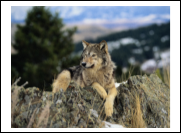 - Is this a wild or domestic animal?
- Is this a wild or domestic animal?
- Is it big or little?
- Is it a beast of prey?
- What colour is it?
- Where does it live?
- What does it like to eat?
- What can it do?
X. Reading for information:
T: You know that every big city has a zoo. Let’s read about London zoo. Say what you can see there.
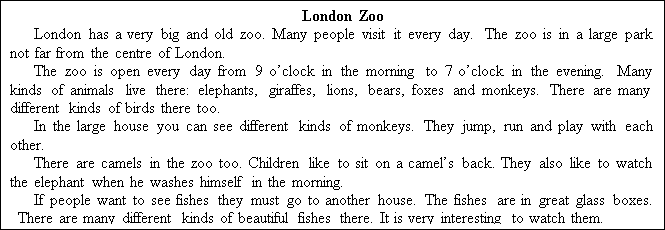
T: Let’s see how attentively you have read the text. Answer the questions:
- What kind of zoo has London?
- When is it open?
- What animals live in the zoo?
- What can children do in the zoo?
- Where can people see the fishes?
- Do you like London zoo? Why?
XI. Writing competition:
T: Here you can see some bricks with letters on them. From these letters make up words – names of animals and write them down. You can double the letters if necessary. The pupil with the greatest number of words will win.













Key-words: bear, hare, lion, tiger, hen, cat, crocodile, bat, rhino, rat, rabbit, bird, dino, hedgehog.
XII. Hometask:
T: For the next time retell about London Zoo and your favourite animal.
XIII. Summing up:
![]()
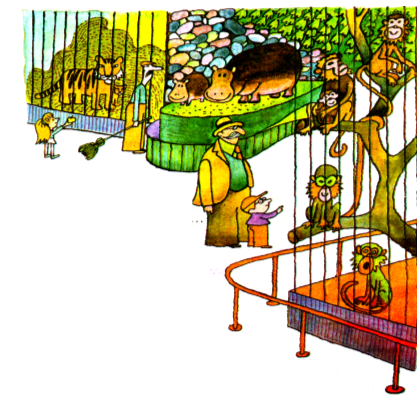 T: So, children, it’s high time to go home from the zoo. On our way let’s play a snow-ball game. Remember what animals you have seen at the zoo.
T: So, children, it’s high time to go home from the zoo. On our way let’s play a snow-ball game. Remember what animals you have seen at the zoo.


про публікацію авторської розробки
Додати розробку

